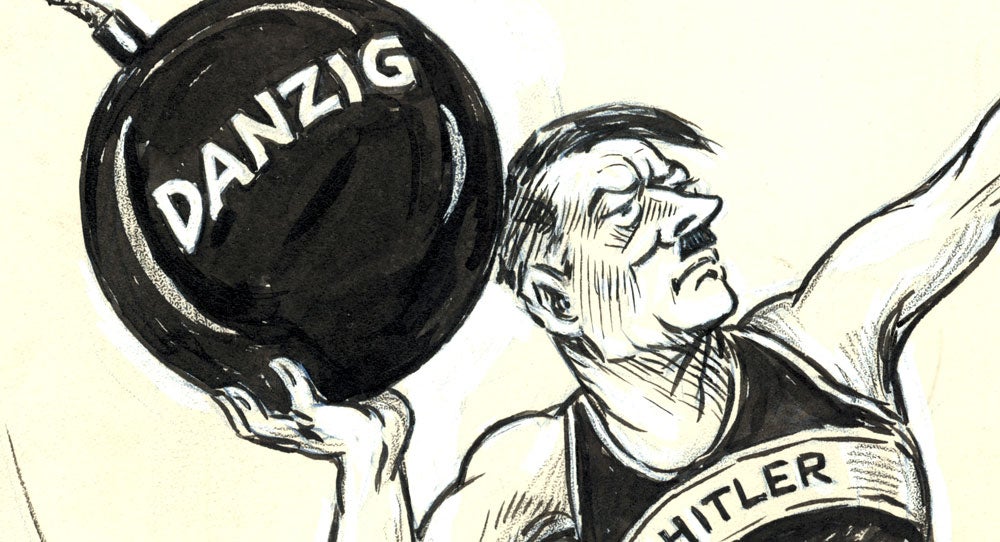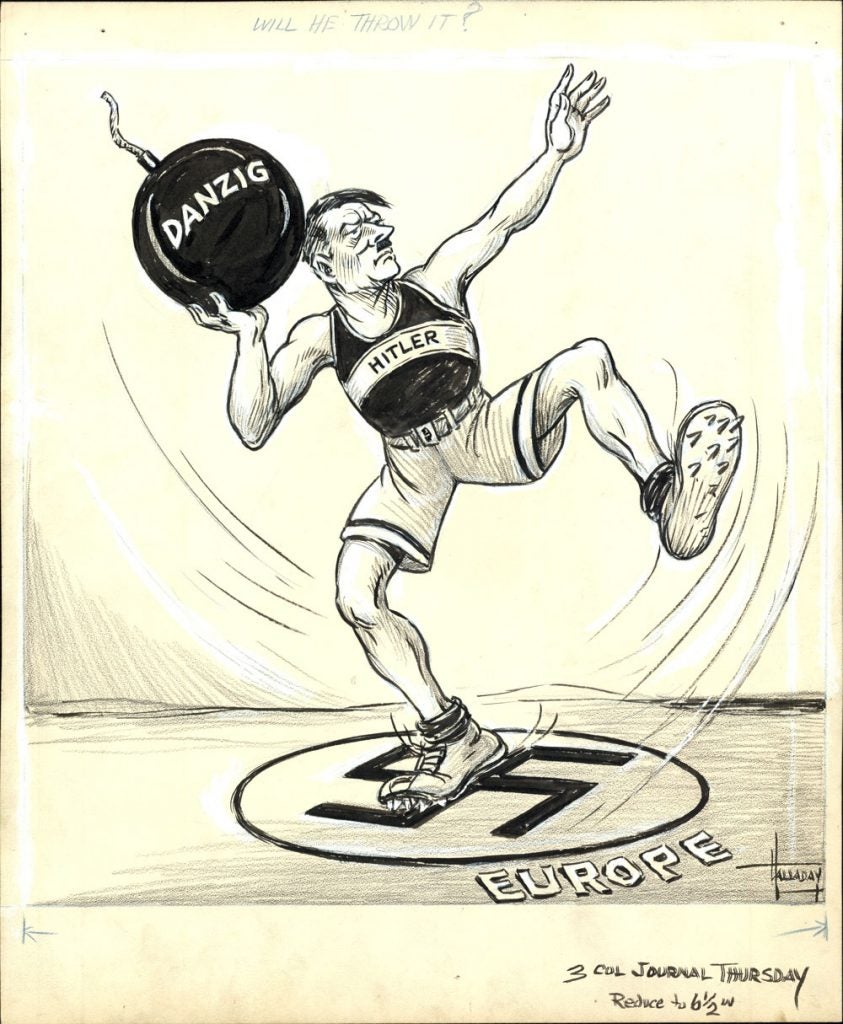
“Will He Throw It?” (August 31,1939)
by Milton Rawson Halladay (1874-1961)
13.5 x 19 in., ink on board
Coppola Collection
Halladay was a native of Vermont and a noted political cartoonist for the Providence Journal (Rhode Island) for nearly fifty years (1900-1947). His cartoons were published in countless other newspapers and magazines. He has been called “one of the deans of American political cartooning.” His cartoon commemorating the death of Thomas A. Edison was a runner-up for the Pulitzer Prize.
Although World War II “officially” began in September 1939, with the invasion of Poland, following the annexation of Austria and Czechoslovakia the previous year, another early shot in the upcoming was Danzig.
Danzig was an ethnically German city located northwest of Warsaw on the Baltic Sea coast that had been part of Germany from the early 1800’s until the end of World War I. Hitler’s interest in Danzig was long-standing, arguably central to the Nazi ideology, which called for the unification of all German people.

Danzig had been stripped from German control after World War I and established as the Free City of Danzig by the League of Nations. Germany had also lost portions of Posen and West Prussia to Poland. In the post WW2 maps, Danzig and the so-called Polish Corridor ensured Poland’s access to the Baltic Sea, but they also separated East Prussia from the rest of Germany. This outraged many Germans, particularly Hitler, who saw this concession as temporary. Throughout the 1930s, Hitler called for Danzig to be reunited with Germany.
Danzig was the focus of attention throughout all of 1939.
On August 27, Chancellor Hitler wrote to French Premier Daladier that war seemed in evitable: “. . . no nation with a sense of honor can ever give up almost two million people and see them maltreated on its own frontiers. I therefore formulated a clear demand: Danzig and the Corridor must return to Germany. The Macedonian conditions prevailing along our eastern frontier must cease. I see no possibility of persuading Poland, who deems herself safe from attack by virtue of guarantees given to her, to agree to a peaceful solution. . . . I see no possibility open to us of influencing Poland to take a saner attitude and thus to remedy a situation which is unbearable for both the German people and the German Reich.”
And on the early morning of September 1, Germany invaded Poland. . The first shots—fired at Danzig— came not from one of Hitler’s modern weapons of war, but from the SMS Schleswig-Holstein, a three-decades-old German battleship on a “good will” visit to Danzig’s harbor. By shelling a Polish ammunition depot located on Danzig’s Westerplatte peninsula, the Schleswig-Holstein started the 7-day Battle of Westerplatte and, thus, World War II.
From the Fuhrer: “The Polish State has refused the peaceful settlement of relations which I desired, and has appealed to arms. Germans in Poland are persecuted with bloody terror and driven from their houses. A series of violations of the frontier, intolerable to a great Power, prove that Poland is no longer willing to respect the frontier of the Reich.”
Danzig was annexed by Germany.

